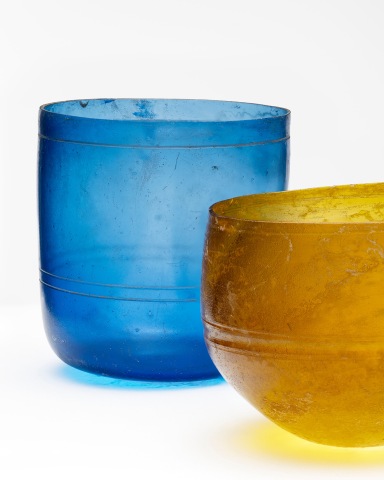Further images
Free-blown in translucent, bright amber- coloured glass. The beaker has particularly
thin walls, a fine wheel-cut line beneath the
slightly uneven, ground-down rim, with a
thicker one at the widest part of the body
bordered by two further lines. The base gently
pushed up. Intact, patches of incrustation and
thin layers of iridescence throughout.
This form of cup, which was typically blown
in both bright and natural colours, are
frequently referred to “Hofheim cups”.
So-called after the Rhineland military site
where over thirty examples were found.
Provenance
Herzer & Co., Munich, Germany; acquired
in the 1970s
Private collection, Germany
Art market, North America
Anonymous Sale; Christie’s, New York, 4th June 2008, consigned from the above
Private collection of L.T., Switzerland
Cahn Auktionen AG, Basel, Switzerland,
19th November 2014
Merrin Gallery, New York, USA
Private collection, the Netherlands; acquired
from the above 18th June 2015
Literature
E. Marianne Stern, Roman, Byzantine and Early Medieval Glass in the Ernesto Wolf Collection (Ostfildern, 2001), p.73, cat.no.16
Publications
Christie's, New York, Antiquities, 4th June 2008, lot 115Cahn Auktionen AG, Basel, Switzerland, Auktion 9, 19th November 2014, lot 224





